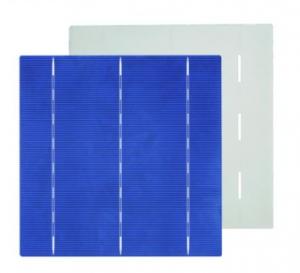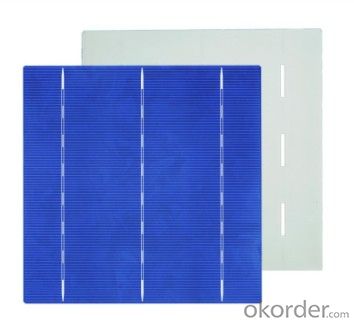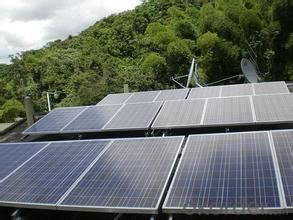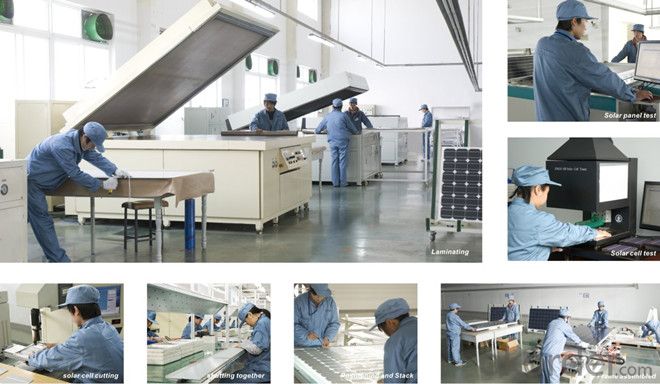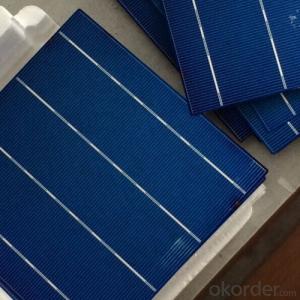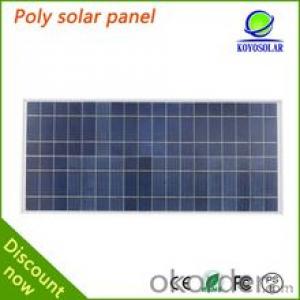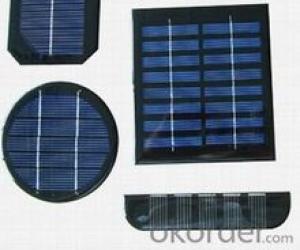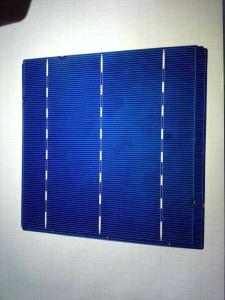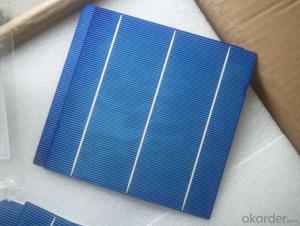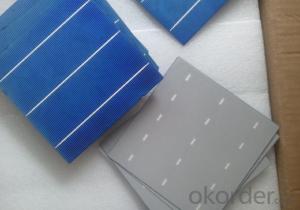Solar Cells Wholesale China - Three BB Poly Solar Cell with A Grade and Anti-PID
- Loading Port:
- Shanghai
- Payment Terms:
- TT or LC
- Min Order Qty:
- 10000 watt
- Supply Capability:
- 1000000 watt/month
OKorder Service Pledge
OKorder Financial Service
You Might Also Like
Brief Introduction of Solar Cells
A solar cell, is an electrical device that converts the energy of light directly into electricity by the photovoltaic effect, which is a physical and chemical phenomenon. It is a form of photoelectric cell, defined as a device whose electrical characteristics, such as current, voltage, or resistance, vary when exposed to light. Solar cells are the building blocks of photovoltaic modules, otherwise known as solar panels.
Advantage of Polycrystalline Solar Cells
Tire-1 Solar Cells’ Manufacturer Quality Guarantee. With a complete and sophisticated quality government system, our Quality Management have arrived world’s leading place. Customer can receive Tire-1 Cells Maker’s Quality Standard Products.
Trusted Warranty. We can supply trusted after-sales service to our customer. If our cells are found not in conformity to the specification of manufacturer, or should the inspected quantity found in shortage, or should the packing found damaged, the buyer has the right to claim to the seller. The claim, if any, should be presented to seller within 30 days after cargo's arrival date to the port, together with related inspection report and photos issued and provided by a reputable independent surveyor such as SGS.
Factory Picture of Solar Cells
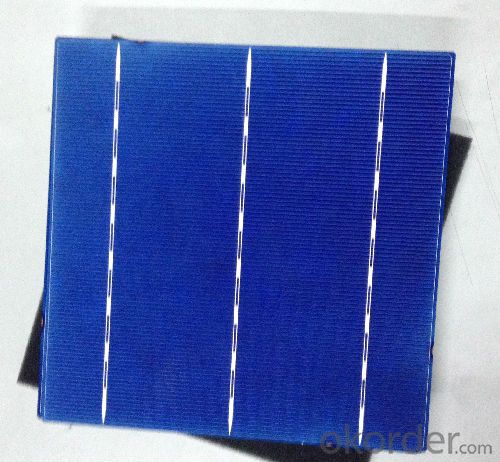
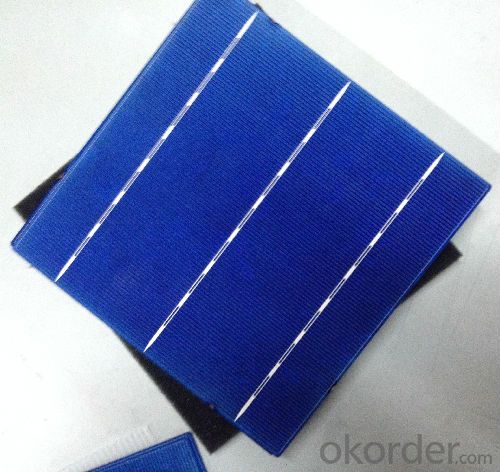
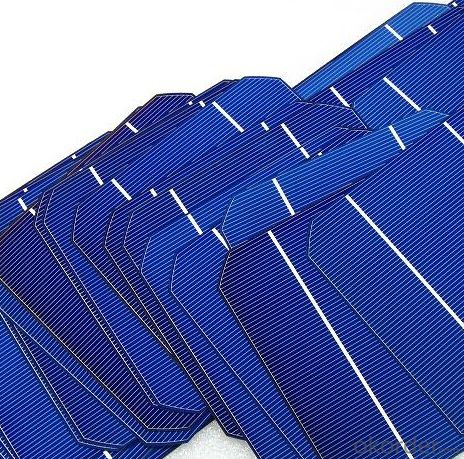
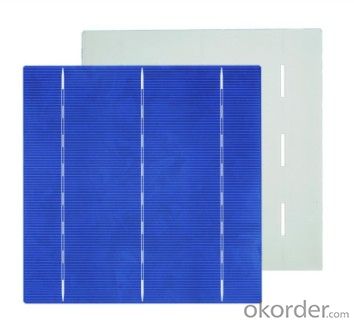
FAQ
We have organized several common questions for our clients,may help you sincerely:
What’s price per watt?
A: It’s depends on the quantity, delivery date and payment terms of the order. We can talk further about the detail price issue. Our products is high quality with lower price level.
Can you tell me the parameter of your solar cells?
We have different series of cells with different power output, both from c-si to a-si. Please take our specification sheet for your reference.
How do you pack your products?
We have rich experience on how to pack the panels to make sure the safety on shipment when it arrives at the destination.
- Q: Are solar cells affected by pollution?
- Solar cells can be affected by pollution, particularly air pollution, as it can reduce the amount of sunlight that reaches the cells. This can result in a decrease in their efficiency and overall energy production. However, regular cleaning and maintenance can help mitigate the impact of pollution on solar cell performance.
- Q: What is the impact of shading on solar cell performance?
- Shading has a significant negative impact on solar cell performance. When a solar cell is partially shaded, it reduces the amount of sunlight reaching the shaded area, leading to a decrease in power generation. This is because shading disrupts the flow of electrical current within the solar cell, resulting in reduced efficiency and overall output. Even a small amount of shading, such as from trees, buildings, or debris, can have a noticeable impact on the performance of the solar cell. Therefore, it is important to carefully consider the placement and positioning of solar panels to avoid shading and maximize their efficiency.
- Q: Can solar cells be used for powering remote weather monitoring stations?
- Yes, solar cells can be used to power remote weather monitoring stations. Solar cells are a reliable and sustainable source of energy that can convert sunlight into electricity. They can be installed in remote areas where access to the power grid is limited or non-existent, providing a consistent power supply to operate weather monitoring equipment. Additionally, solar cells require minimal maintenance and have a long lifespan, making them a practical choice for powering remote weather monitoring stations.
- Q: Can solar cells be used in smart home automation systems?
- Yes, solar cells can be used in smart home automation systems. Solar cells are used to convert sunlight into electricity, which can then be used to power various devices and systems in a smart home. By integrating solar cells into a smart home automation system, homeowners can reduce their reliance on traditional electricity sources and take advantage of renewable energy, leading to energy efficiency and cost savings. Additionally, solar-powered smart home automation systems can contribute to a more sustainable and environmentally friendly lifestyle.
- Q: Can solar cells be used for powering wildlife tracking devices?
- Yes, solar cells can be used for powering wildlife tracking devices. Solar cells are a reliable and sustainable source of energy that can effectively power small electronic devices, including wildlife tracking devices. They can harness sunlight and convert it into electrical energy, providing a continuous power supply for tracking devices in remote locations where other power sources may be limited or unavailable.
- Q: Why are the poly Solar cell specifications is different from each other, they seem to have the different size of 125mm, 156mm, 152mm, is the 152mm's battery technology is higher than the other?
- To make is simple first, the numbers you saw such as 125mm, 156mm, 152mm, refers to the diameter of the silicon wafer.
- Q: Can solar cells be used in desert environments?
- Yes, solar cells can definitely be used in desert environments. In fact, solar energy is particularly well-suited for such locations due to the high levels of solar radiation and clear skies typically found in deserts. The arid climate and ample sunlight make desert regions ideal for harnessing solar power, allowing solar cells to generate a significant amount of electricity.
- Q: Can solar cells be used for telecommunications infrastructure?
- Yes, solar cells can indeed be used for telecommunications infrastructure. Solar cells can generate electricity from sunlight, which can be used to power various telecommunications equipment such as cell towers, base stations, and repeaters. This renewable energy source helps reduce dependence on traditional power sources, increases energy efficiency, and can even enable telecommunication services in remote or off-grid areas where grid power is unavailable.
- Q: Can solar cells be used for powering remote research stations?
- Yes, solar cells can be used for powering remote research stations. Solar cells are an effective and sustainable source of renewable energy that can provide electricity in remote locations where access to the power grid is limited or nonexistent. By harnessing sunlight and converting it into electricity, solar cells can provide a reliable power supply for various research equipment and facilities in remote areas. Additionally, advancements in solar technology have made solar cells more efficient and cost-effective, making them an ideal choice for powering remote research stations.
- Q: Can solar cells be used for powering remote oil and gas pipelines?
- Yes, solar cells can be used for powering remote oil and gas pipelines. Solar energy is a sustainable and reliable source of power that can be harnessed in remote locations. By installing solar panels along the pipeline, energy can be generated and used to operate various equipment and systems, reducing the reliance on traditional power sources and minimizing the environmental impact.
Send your message to us
Solar Cells Wholesale China - Three BB Poly Solar Cell with A Grade and Anti-PID
- Loading Port:
- Shanghai
- Payment Terms:
- TT or LC
- Min Order Qty:
- 10000 watt
- Supply Capability:
- 1000000 watt/month
OKorder Service Pledge
OKorder Financial Service
Similar products
Hot products
Hot Searches
Related keywords
